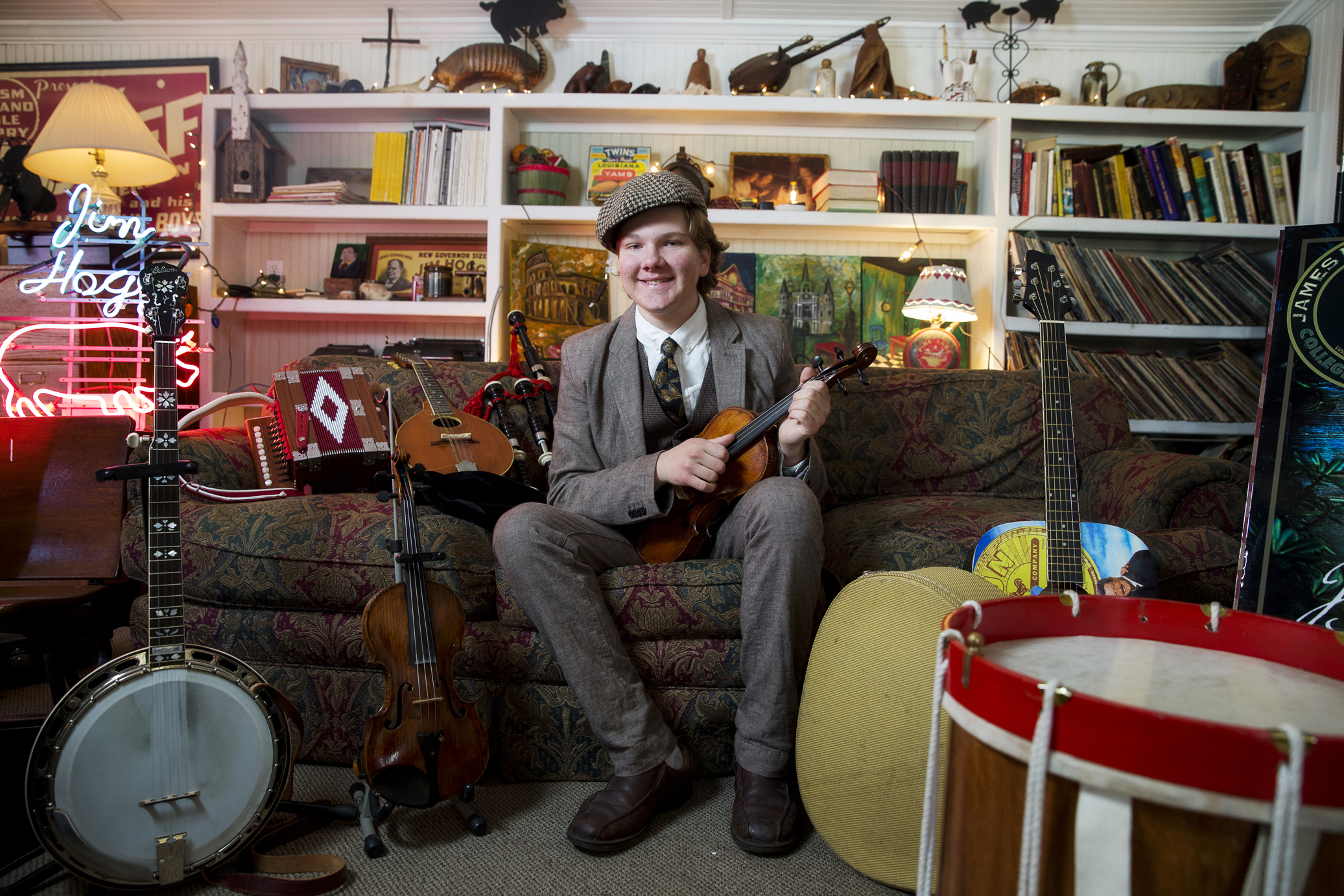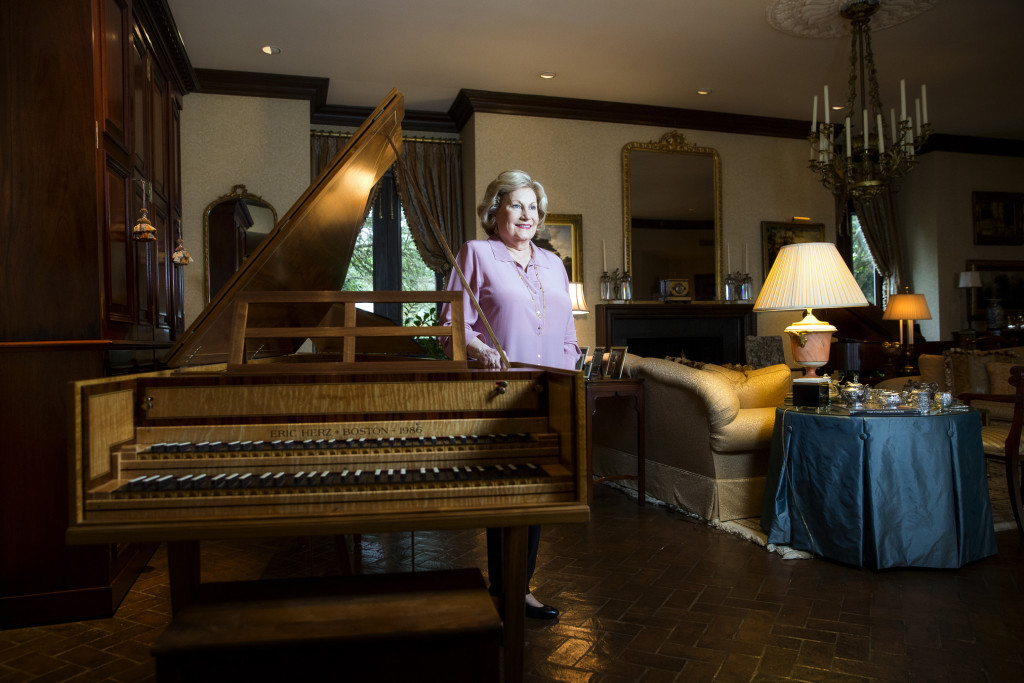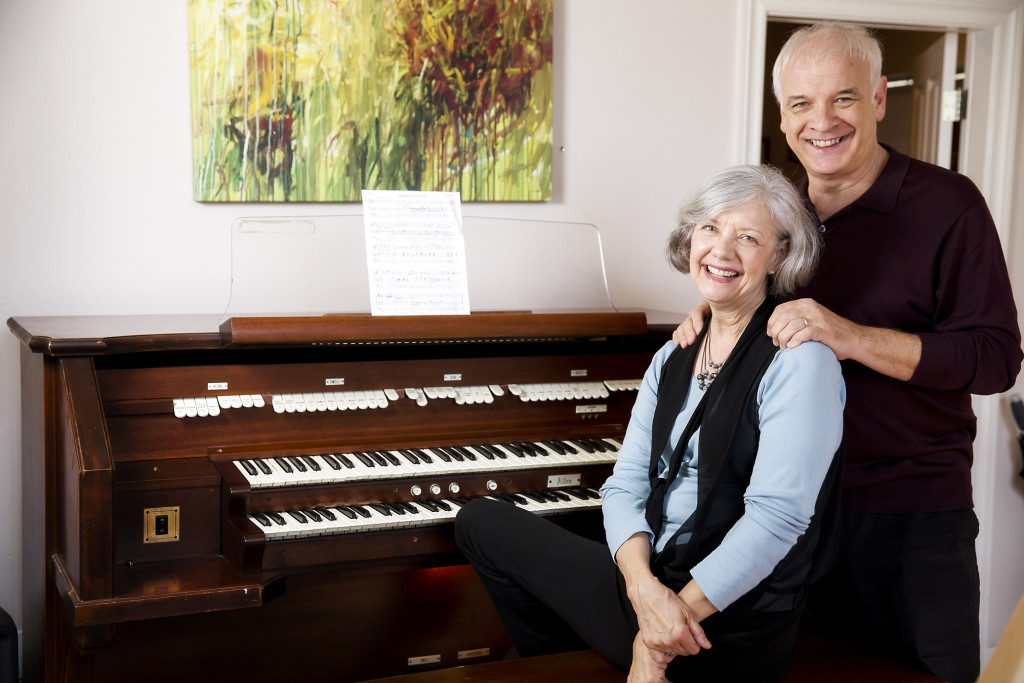
Baton Rouge musicians share their one-of-a-kind instrument collections
James Linden Hogg
Compared to the knickers and stockings he’s worn for performances before, James Linden Hogg describes his current performance attire—a 1910s-era three-piece tweed suit and a newsboy cap—as “contemporary.” The multi-instrumentalist prefers folk, Celtic and touches of gospel music over today’s popular music, and his favorite instruments are at least 100 years his senior.
This 15-year-old is a boy displaced in time.
|
|
Growing up with a bluegrass-playing dad and a love of all things historic, collecting antique instruments seemed a perfect convergence for Hogg. His extensive collection includes a 1780 Italian violin made of Mediterranean spruce, a 1928 pre-war Mastertone banjo and a 1915 Gibson A1 mandolin signed by the father of bluegrass, Bill Monroe.
His favorite, perhaps, is a German violin from 1840 that his mother found 25 years ago, once too damaged to do more than hang on the wall for decoration. After being turned away by several refurbishers, the Hoggs found a specialist in Florida to tear it apart, shave the wood down from cello thickness to violin thickness and do a complete overhaul of the body. The result sings: Hogg used it last year to win the NSU Folklife Festival Louisiana State Fiddle Championship.
The young virtuoso loves the history and character of these instruments, and he insists their personalities come across in their sound.
“With me, I love warm-sounding instruments,” Hogg says. “That bright sound that you get from new instruments is not really something that’s a goal for instrument makers or even musicians who play them. I want something that sounds old, woody, very natural and acoustic.”

Beth Fuller
Beth Fuller’s German double harpsichord almost never made it to Louisiana.
It’s a stunning 7-foot instrument custom-made by Eric Herz, famed Holocaust survivor, Boston music leader and harpsichord maker. He called the piece the most perfect instrument he ever made.
It’s Fuller’s dream instrument, with only five of them made and her own “Southern influence” to its curved lines. Along its spine, Herz inset the last of his store of burled walnut he’d brought over to the states from his native Germany.
It took 17 months to make. Somehow, in the course of shipping, the harpsichord was lost for three days, until it turned up on a loading dock in Detroit.
The German double was this retired harpsichordist’s first piece, and it’s still her most cherished. In 1988, she commissioned a second—a 5-foot French double harpsichord with ornate flowers painted along the soundboard—to bring along when touring. She now owns a third: a small, antique Dolmestch with detachable legs that she likes to take with her on fly-fishing trips.
If asked to put a dollar value on her collection, she simply describes each piece as “irreplaceable.”
Thankfully, her husband doesn’t mind having the huge pieces in the living room of their home, and the Louisiana humidity is the perfect climate to maintain the instruments.
“What do these instruments mean to me? Well, everything, of course,” Fuller says. “They add a lot to our home.”

Bill Grimes
Bassist and composer Bill Grimes’ collection is different from most. While there’s only one physical instrument, it has the potential to digitally contain hundreds.
When Grimes’ wife Jan, an instructor at LSU’s School of Music alongside Grimes, accepted the organist position at St. John the Evangelist in Plaquemine, she needed a way to practice at home. Grimes happened across a disused Allen church organ for sale in a neighborhood newsletter. He ended up salvaging the the 32-pedal instrument from its owner, who had bought it from the International Shrine of St. Jude in New Orleans.
The organ itself left a bit to be desired, though. It’s a 1950s electronic organ, described by Grimes as a “tired old instrument” with outdated sounds. A student told Grimes about the Hauptwerk system, a virtual pipe organ software program that, once installed, allows the user to download and play the best pipe organs in history on their own electronic organ.
Before long, Grimes was obsessed with gutting the organ and retrofitting it to handle the Hauptwerk software, and he set out devising a plan to connect new Musical
Instrument Digital Interface (MIDI) encoder boards to the keyboards and pedals.
“I disassembled the instrument in the room, and I started staring at 50-plus-year-old transistors, capacitors, tube amplifiers and some things I didn’t even recognize. … The inside of the organ was not only very dusty, it was covered with candle soot, the result of being in a shrine for many years,” Grimes says.
After $400 in parts, some new speakers, a massive amount of Internet research and a lot of self-teaching in iron soldering and rewiring, Grimes had an organ with powerful sound and the ability to switch between the subtly different tones of hundreds of pipe organs with the touch of a button. The first organ Grimes downloaded is the one built for St. Anne’s Church in Birmingham, England, and he’s eyeing the famous E.M. Skinner organ at Our Lady of Mt. Carmel in Chicago.
“It’s a new adventure for both of us,” Grimes says. “I’m a bass player and only play the organ in an emergency—or when no one is listening—but I love to compose new pieces, mostly meditations, for Jan to play at church. It helps in the composition process for me, and it means she can practice at home.”
|
|
|
